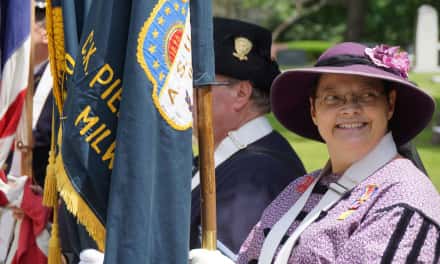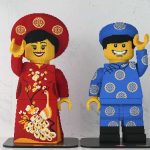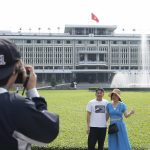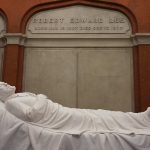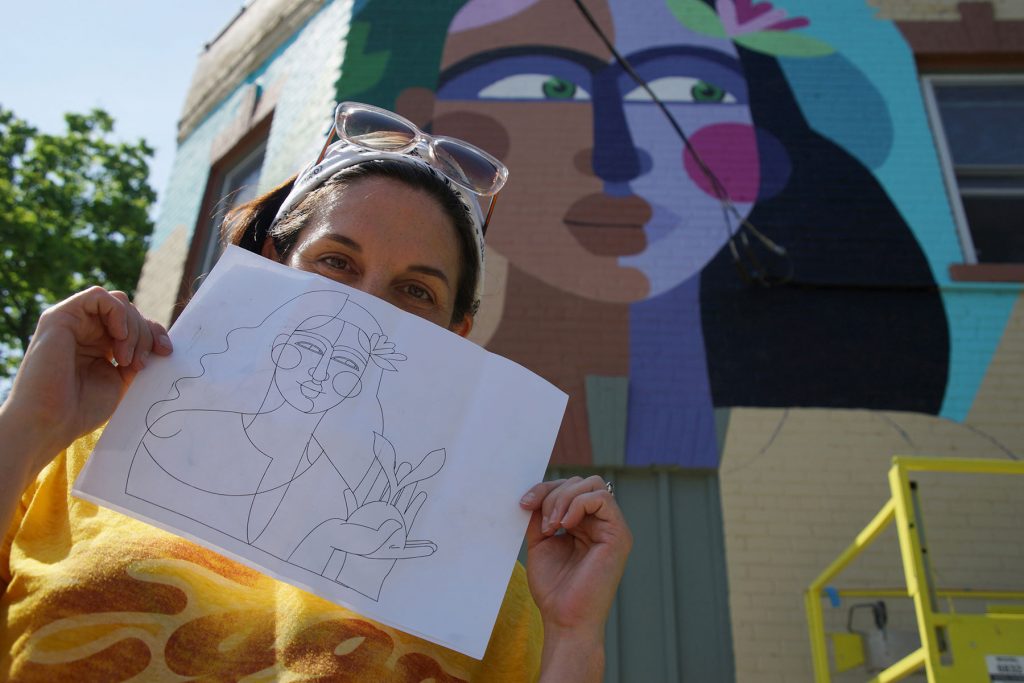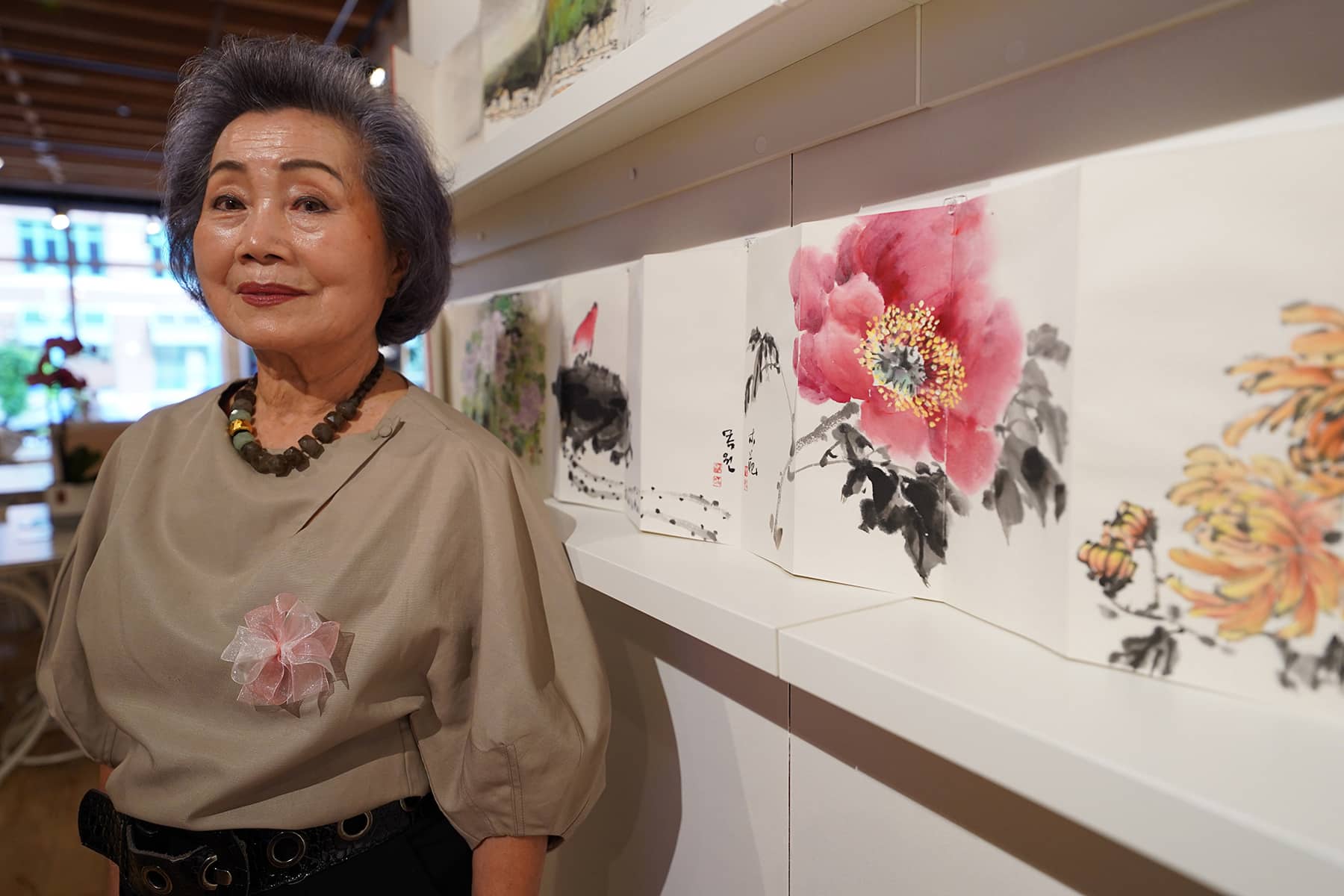
The recent “Ink. Brush. Paper.” (지필묵) exhibition in Milwaukee offered a rare glimpse into the tradition of Korean ink-brush painting, a practice steeped in history, discipline, and philosophy.
MARN (Milwaukee Artist Resource Network) continues to play a pivotal role in promoting diverse artistic voices in the city known for its cultural history. Located in the Third Ward, the creative nonprofit hosted the exhibit from September 6 to October 20.
“Ink. Brush. Paper.” was more than a display of visual art. It was a celebration of Korean cultural expression, embodied in the works of Mokwon, Subsoo Lim and her 15 student artists.
Known as Sumukhwa (수묵화), Korean ink-brush painting is a traditional art form that uses black ink in various concentrations and brush techniques to create depictions of landscapes, nature, or animals with colored accents.
The curator of the exhibition, Samantha Timm, shared her insights during the September 6 reception about the significance of the event, highlighting both its artistic and cultural relevance.
“This show is a huge honor for us to host at MARN’s Art and Culture Hub, here in the Third Ward of Milwaukee. It’s a show about cultural transmission, centered around Mokwon’s goal of passing on the very expansive tradition of Korean ink-brush painting,” said Timm. “The way it’s taught and practiced is extremely different from how many contemporary artists work today.”
In the context of Korean art, Mokwon (목원) can be best understood as a title or artistic pseudonym that reflects the artist’s spiritual or philosophical perspective. Korean artists, particularly those influenced by traditional Eastern philosophies such as Confucianism, Buddhism, or Daoism, often adopt such titles to signify their connection to deeper cultural, spiritual, or artistic values.
“It’s rare to see this kind of work in Milwaukee,” said Timm. “Mokwon’s art is displayed on the outer walls, embracing her students, symbolically guiding them.”
Timm felt that the exhibit was a perfect fit for MARN’s mission-aligned focus to help artists grow their practice and connect to the creative ecosystem, bridging the gap between local Korean American artists and the wider public. The “Ink. Brush. Paper.” exhibit accomplished that by offering Milwaukeeans a chance to engage with an art form that was both foreign and familiar in its themes.
“The Korean culture is deeply infused into the art, both through Mokwon’s instruction and the students’ practice,” said Timm. “What surprised me the most was the dedication involved in this art form. Students spend months perfecting one gesture or line. It’s about mastering the movement of the hand, not just creating a representation. The simplicity of the work is deceiving. It looks effortless, but it’s beautiful because of the subtlety and discipline behind it.”
Lim is a highly respected Milwaukee artist from South Korea known for her expertise in traditional ink-brush painting. Ranging from delicate floral compositions to intricate landscapes, her artwork is distinguished by the elegance and precision of her brushwork, reflecting a connection to the natural world and her Korean heritage. With a career spanning four decades, Lim has gained recognition as an artist, a mentor, and a leader in the art community.
“Painting is everything in my life. During the most difficult and challenging times, if I hadn’t been someone who painted, I don’t think I could have endured it. That’s why I don’t place too much importance on the outcome of a painting,” said Lim. “The moment when I paint, cherishing both the act of painting and the challenging process that comes with it, is when I am the happiest.”
As a canvas for her artwork, Lim uses hanji (한지) the traditional Korean handmade paper crafted from the inner bark of the mulberry tree, known as daknamu (닥나무), rather than rice. Although often referred to as “Korean rice paper,” the term is inaccurate and misleading, as it is made from the mulberry tree’s fibers.
Hanji has been used for centuries in Korea for a variety of purposes, including calligraphy, painting, bookmaking, and even in crafts such as making lanterns, screens, and furniture. It is known for its durability, versatility, and soft texture, making it ideal for traditional ink-brush painting.
Its ability to absorb ink and retain color makes hanji particularly suitable for the expressive brushstrokes seen in Korean art, contributing to the fluidity and grace that characterize the works. Its long fibers allow for durability and flexibility, which is also why it has been so highly regarded in Korean culture for both artistic and practical uses.
“I wanted to introduce Eastern art to a place where Western art is predominant. That’s why I’ve held exhibitions and taught students, to share Korean art more widely,” said Lim. “Part of my goal is also to display original Korean paintings, especially for immigrants in the Milwaukee area, as I’ve found many people here are curious about traditional Korean art.”
Showcased in numerous international exhibitions, displays of Lim’s work include solo shows and more than 200 group exhibitions across South Korea, Japan, Taiwan, China, South Africa, and the United States. Her paintings are also featured in the permanent collection at the Korean National Museum of Art.
“It has been rewarding to see the growing global interest in Eastern culture, especially Korean culture, and more people who are becoming curious about it,” Lim added. “This has led to an increasing number of students wanting to learn about Korean traditional painting. Through teaching, I hope to help students experience Korean art and culture firsthand.”
Since relocating to Milwaukee five years ago to be closer to her family, Lim has continued to share her craft with the local public. In addition to her artistic career, Lim has been dedicated to fostering the development of other artists, particularly women. She founded two artist associations, Yeonji (연지) and Gayeon (가연), which have created opportunities for women painters to exhibit their work throughout East Asia.
“It’s been a wonderful opportunity for me as a curator to work with Mokwon and collaborate with her on the show,” said Timm. “It was a true collaboration. I’m not an expert in this style of painting, so we worked together to ensure the art was displayed in a way that aligned with her practice and discipline. I’m thankful she trusted me with it.”
By hosting the “Ink. Brush. Paper.” exhibit, MARN continued its mission of supporting the work of underrepresented groups. The narratives of Korean American women artists bring vital perspectives to the city’s creative landscape. That significance goes beyond just adding more variety to art exhibitions. It is also about inclusion, visibility, and empowering voices that have historically been overlooked.
Korean women, both in Korea and abroad, often navigate a complex cultural identity, shaped by traditions, societal expectations, and the pressures of modernity. Their art reflects that unique intersection, providing a window into stories that many might not encounter otherwise.
During the opening reception, Timm said it was her hope that the public felt invited to look closer and keep learning.
“I also hope they speak to the artists in the show. There are many of them, and I’ve learned a lot from them during the installation process,” Timm added. “They each have their own artistic voice, and I think of them as two distinct cohorts: one from Milwaukee and one from Chicago. I also hope it gives the public an opportunity to get to know these artists better.”
By providing these women with a platform, MARN helps dismantle stereotypes, offering a counter-narrative to the limited and often misunderstood depictions of Korean culture in the West. Art is one of the most powerful mediums through which people can understand different worldviews, and Milwaukee’s cultural scene thrives most when it reflects the global community.
For Korean American women artists in particular, the opportunity to present their work within the Milwaukee art space was a chance to share their heritage and explore personal experiences of migration, identity, and womanhood.
As the creative work of Korean women gains more attention globally, Milwaukee can contribute to the movement by ensuring those voices are heard locally.
- Exploring Korea: Stories from Milwaukee to the DMZ and across a divided peninsula
- A pawn of history: How the Great Power struggle to control Korea set the stage for its civil war
- Names for Korea: The evolution of English words used for its identity from Gojoseon to Daehan Minguk
- SeonJoo So Oh: Living her dream of creating a "folded paper" bridge between Milwaukee and Korean culture
- A Cultural Bridge: Why Milwaukee needs to invest in a Museum that celebrates Korean art and history
- Korean diplomat joins Milwaukee's Korean American community in celebration of 79th Liberation Day
- John T. Chisholm: Standing guard along the volatile Korean DMZ at the end of the Cold War
- Most Dangerous Game: The golf course where U.S. soldiers play surrounded by North Korean snipers
- Triumph and Tragedy: How the 1988 Seoul Olympics became a battleground for Cold War politics
- Dan Odya: The challenges of serving at the Korean Demilitarized Zone during the Vietnam War
- The Korean Demilitarized Zone: A border between peace and war that also cuts across hearts and history
- The Korean DMZ Conflict: A forgotten "Second Chapter" of America's "Forgotten War"
- Dick Cavalco: A life shaped by service but also silence for 65 years about the Korean War
- Overshadowed by conflict: Why the Korean War still struggles for recognition and remembrance
- Wisconsin's Korean War Memorial stands as a timeless tribute to a generation of "forgotten" veterans
- Glenn Dohrmann: The extraordinary journey from an orphaned farm boy to a highly decorated hero
- The fight for Hill 266: Glenn Dohrmann recalls one of the Korean War's most fierce battles
- Frozen in time: Rare photos from a side of the Korean War that most families in Milwaukee never saw
- Jessica Boling: The emotional journey from an American adoption to reclaiming her Korean identity
- A deportation story: When South Korea was forced to confront its adoption industry's history of abuse
- South Korea faces severe population decline amid growing burdens on marriage and parenthood
- Emma Daisy Gertel: Why finding comfort with the "in-between space" as a Korean adoptee is a superpower
- The Soul of Seoul: A photographic look at the dynamic streets and urban layers of a megacity
- The Creation of Hangul: A linguistic masterpiece designed by King Sejong to increase Korean literacy
- Rick Wood: Veteran Milwaukee photojournalist reflects on his rare trip to reclusive North Korea
- Dynastic Rule: Personality cult of Kim Jong Un expands as North Koreans wear his pins to show total loyalty
- South Korea formalizes nuclear deterrent strategy with U.S. as North Korea aims to boost atomic arsenal
- Tea with Jin: A rare conversation with a North Korean defector living a happier life in Seoul
- Journalism and Statecraft: Why it is complicated for foreign press to interview a North Korean defector
- Inside North Korea’s Isolation: A decade of images show rare views of life around Pyongyang
- Karyn Althoff Roelke: How Honor Flights remind Korean War veterans that they are not forgotten
- Letters from North Korea: How Milwaukee County Historical Society preserves stories from war veterans
- A Cold War Secret: Graves discovered of Russian pilots who flew MiG jets for North Korea during Korean War
- Heechang Kang: How a Korean American pastor balances tradition and integration at church
- Faith and Heritage: A Pew Research Center's perspective on Korean American Christians in Milwaukee
- Landmark legal verdict by South Korea's top court opens the door to some rights for same-sex couples
- Kenny Yoo: How the adversities of dyslexia and the war in Afghanistan fueled his success as a photojournalist
- Walking between two worlds: The complex dynamics of code-switching among Korean Americans
- A look back at Kamala Harris in South Korea as U.S. looks ahead to more provocations by North Korea
- Jason S. Yi: Feeling at peace with the duality of being both an American and a Korean in Milwaukee
- The Zainichi experience: Second season of “Pachinko” examines the hardships of ethnic Koreans in Japan
- Shadows of History: South Korea's lingering struggle for justice over "Comfort Women"
- Christopher Michael Doll: An unexpected life in South Korea and its cross-cultural intersections
- Korea in 1895: How UW-Milwaukee's AGSL protects the historic treasures of Kim Jeong-ho and George C. Foulk
- "Ink. Brush. Paper." Exhibit: Korean Sumukhwa art highlights women’s empowerment in Milwaukee
- Christopher Wing: The cultural bonds between Milwaukee and Changwon built by brewing beer
- Halloween Crowd Crush: A solemn remembrance of the Itaewon tragedy after two years of mourning
- Forgotten Victims: How panic and paranoia led to a massacre of refugees at the No Gun Ri Bridge
- Kyoung Ae Cho: How embracing Korean heritage and uniting cultures started with her own name
- Complexities of Identity: When being from North Korea does not mean being North Korean
- A fragile peace: Tensions simmer at DMZ as North Korean soldiers cross into the South multiple times
- Byung-Il Choi: A lifelong dedication to medicine began with the kindness of U.S. soldiers to a child of war
- Restoring Harmony: South Korea's long search to reclaim its identity from Japanese occupation
- Sado gold mine gains UNESCO status after Tokyo pledges to exhibit WWII trauma of Korean laborers
- The Heartbeat of K-Pop: How Tina Melk's passion for Korean music inspired a utopia for others to share
- K-pop Revolution: The Korean cultural phenomenon that captivated a growing audience in Milwaukee
- Artifacts from BTS and LE SSERAFIM featured at Grammy Museum exhibit put K-pop fashion in the spotlight
- Hyunjoo Han: The unconventional path from a Korean village to Milwaukee’s multicultural landscape
- The Battle of Restraint: How nuclear weapons almost redefined warfare on the Korean peninsula
- Rejection of peace: Why North Korea's increasing hostility to the South was inevitable
- WonWoo Chung: Navigating life, faith, and identity between cultures in Milwaukee and Seoul
- Korean Landmarks: A visual tour of heritage sites from the Silla and Joseon Dynasties
- South Korea’s Digital Nomad Visa offers a global gateway for Milwaukee’s young professionals
- Forgotten Gando: Why the autonomous Korean territory within China remains a footnote in history
- A game of maps: How China prepared to steal Korean history to prevent reunification
- From Taiwan to Korea: When Mao Zedong shifted China’s priority amid Soviet and American pressures
- Hoyoon Min: Putting his future on hold in Milwaukee to serve in his homeland's military
- A long journey home: Robert P. Raess laid to rest in Wisconsin after being MIA in Korean War for 70 years
- Existential threats: A cost of living in Seoul comes with being in range of North Korea's artillery
- Jinseon Kim: A Seoulite's creative adventure recording the city’s legacy and allure through art
- A subway journey: Exploring Euljiro in illustrations and by foot on Line 2 with artist Jinseon Kim
- Seoul Searching: Revisiting the first film to explore the experiences of Korean adoptees and diaspora































































